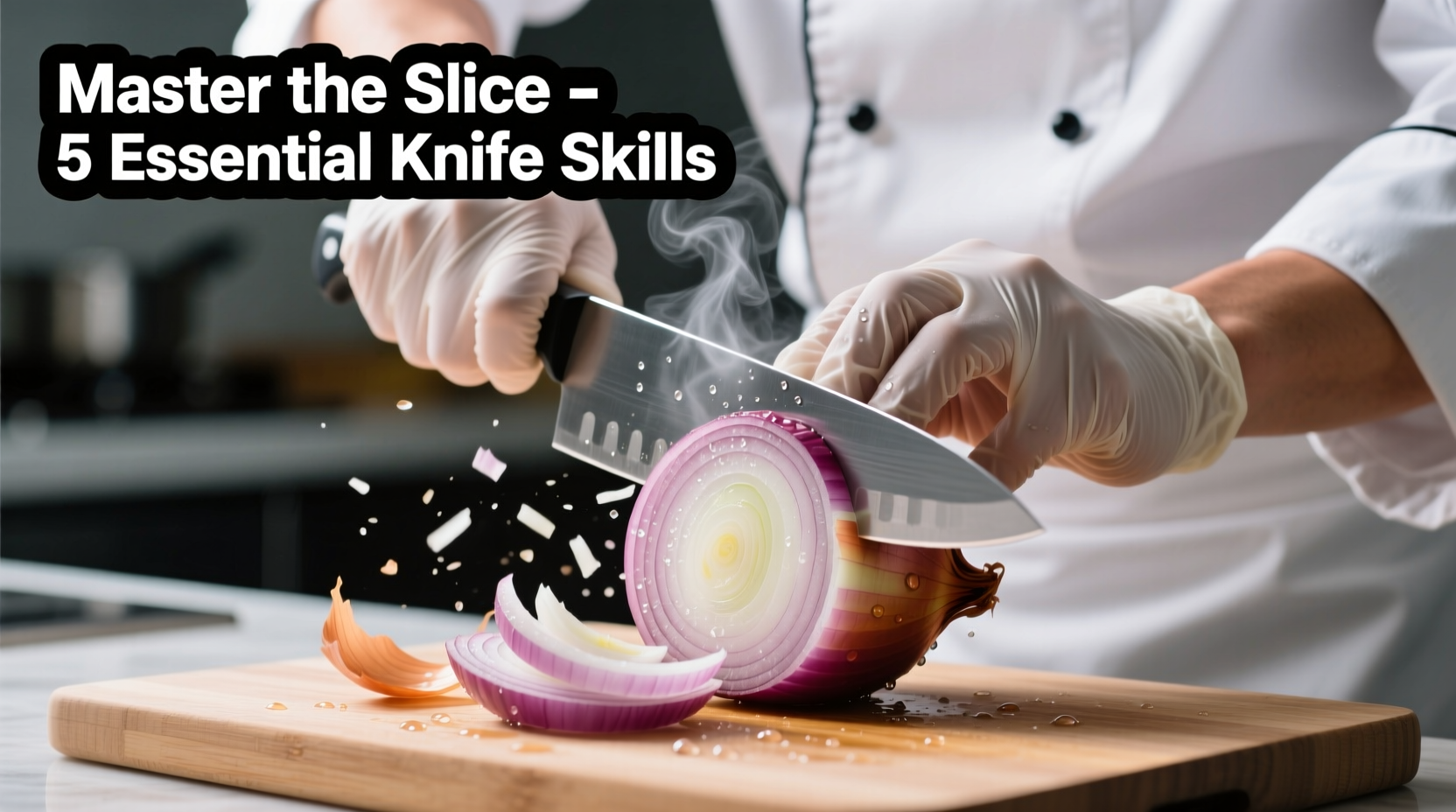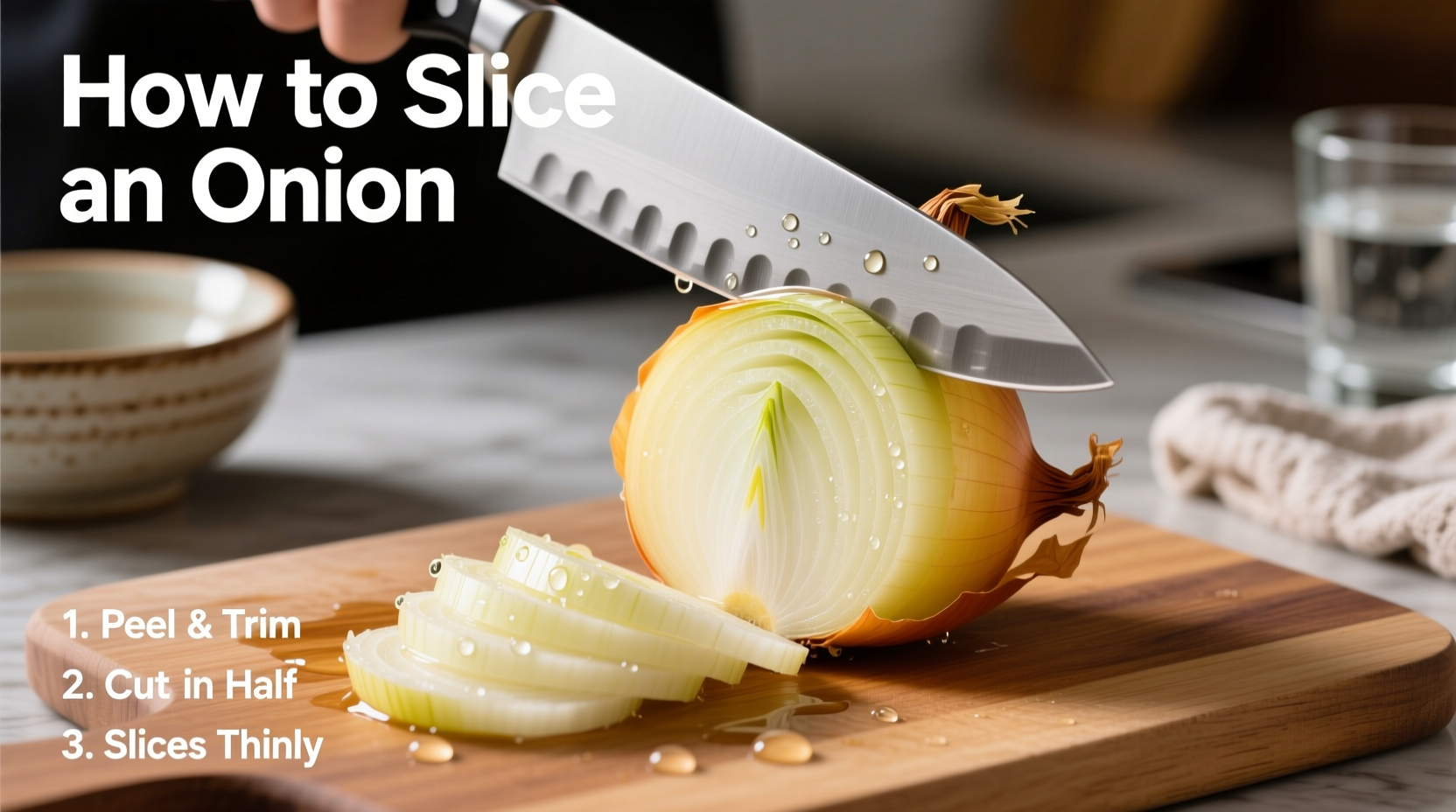Discover the professional chef's method for slicing onions that guarantees clean, even cuts every time while dramatically reducing eye irritation. Whether you're preparing a French onion soup or dicing for salsa, this guide delivers actionable techniques that transform a frustrating chore into a quick, efficient kitchen task. You'll learn not just how to slice an onion, but why certain methods work better for specific dishes.
Essential Tools for Perfect Onion Slicing
Before you begin slicing, ensure you have the right equipment. A sharp 8-inch chef's knife provides the cleanest cuts with minimal cell damage—dull knives crush onion tissues, releasing more tear-inducing compounds. Pair your knife with a stable cutting board; wood or bamboo surfaces maintain better knife grip than slippery plastic.
Professional chefs recommend keeping a bowl of ice water nearby. Submerging your knife blade briefly between cuts reduces sulfur compound transfer to your eyes. For serious home cooks, onion goggles provide 95% tear reduction according to USDA agricultural studies.
Understanding Onion Anatomy: The Key to Clean Cuts
| Onion Component | Function in Slicing | Pro Tip |
|---|---|---|
| Root End | Holds layers together | Leave intact until final cuts for structural stability |
| Skin Layers | Natural protective barrier | Peel under running water to minimize airborne compounds |
| Vertical Fibers | Determine slice integrity | Cut perpendicular to fibers for clean separation |
Step-by-Step: The Professional Slicing Method
Phase 1: Preparation (30 Seconds)
- Trim 1/8 inch from both stem and root ends
- Peel outer skin under cool running water
- Place flat side down on cutting board
- Cut vertically through root end to create two equal halves
Phase 2: Creating Perfect Slices (60 Seconds)
- Place one half flat-side down with root end facing right
- Make horizontal cuts from top toward root (¼ inch apart), stopping ½ inch from root
- Make vertical cuts from top toward root (same spacing), stopping at root
- Finally, slice crosswise from root end toward top for uniform pieces

Science-Backed Tear Prevention Techniques
Onion tears occur when syn-propanethial-S-oxide—a volatile sulfur compound—releases into the air. The 2015 Nature Communications study confirmed that chilling onions for 30 minutes before cutting slows enzyme activity by 40%. For maximum effectiveness:
- Refrigerate whole onions 30 minutes before slicing
- Cut near running water or under a vent hood
- Use a very sharp knife to minimize cell rupture
- Work quickly to reduce exposure time
When to Use Different Slicing Techniques
Not all dishes require the same cut. Understanding context boundaries prevents kitchen disasters:
- Thin slices (1/8 inch): French onion soup, caramelized onions—requires even thickness for uniform cooking
- Medium dice (¼ inch): Salsas, stir-fries—holds shape during cooking while releasing flavor gradually
- Rough chop: Stocks, sauces—maximizes surface area for flavor extraction
- Julienne (matchstick): Asian dishes, garnishes—requires precise vertical cuts before cross-slicing
Professional chefs adjust technique based on dish requirements. For raw applications like salads, thinner slices provide better texture integration. For cooked dishes, slightly thicker cuts maintain integrity during prolonged heating.
Common Mistakes That Cause Tears and Uneven Cuts
Avoid these frequent errors that compromise both your eyes and results:
- Slicing through the root end first: Causes onion to fall apart—always preserve root structure until final cuts
- Using a dull knife: Crushes cells instead of slicing cleanly, releasing 3x more irritants
- Cutting against the grain: Results in uneven pieces that cook inconsistently
- Rushing the process: Increases mistakes and prolongs exposure to irritants
Storing Sliced Onions Properly
Keep prepared onions fresh for up to 7 days by:
- Placing in airtight container with paper towel to absorb moisture
- Storing in vegetable crisper drawer (40°F/4°C)
- Separating by cut type—thin slices degrade faster than chunks
- Labeling container with preparation date
Never store sliced onions near ethylene-producing fruits like apples—they accelerate spoilage. For meal prep efficiency, portion sliced onions into recipe-sized containers before refrigerating.











 浙公网安备
33010002000092号
浙公网安备
33010002000092号 浙B2-20120091-4
浙B2-20120091-4